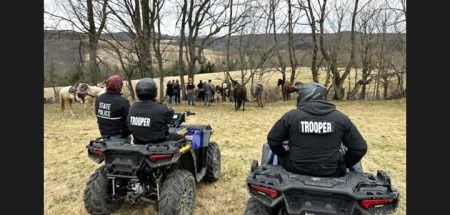Free Trial This Weekend
Published:
June 24th, 2020
By:
Eric Davis

This weekend anybody can go fishing in New York without processing a current fishing license as June 27 and 28 are two Free Fishing Days.
The Department of Environmental Conservation has 6 days out of the year chosen to be Free Fishing Days, where no license is needed to go fishing.
All fishing regulations must still be followed on these days. The other days were/are February 15-16, September 26, and November 11. The days are spaced out so that different angling opportunities are available. For example, the February days allow people to ice fish while September is when salmon are running out of the Great Lakes.
This weekend brings the possibility of catching a big spawning largemouth bass or reeling in some walleye for a fish fry. If you are curious about trying to fish but do not know what to get for gear, here are some basics to start you out.
If you want to go out and just catch whatever will bite, use a middle-of-the-road action fishing rod. A 6-foot, medium action rod is a very versatile choice. It will let you catch some smaller fish without making it too easy and still has the backbone to reel in some good-sized fish.
If you want to catch big fish only, such as Northern pike, go with a six and a half foot or longer rod with a medium-heavy or heavy action. For smaller creeks and streams, try a 5-foot ultralight action rod. Slinging small inline spinners, such as Panther Martins or Rooster Tails, with this can make smaller trout feel like monsters. Also, consider this rod for young anglers to use when targeting panfish, such as bluegills.
The short and light rod will be easier for them to use without getting it tangled in the bushes or whacking bystanders. Also think about getting a push button, or spincasting, reel for younger anglers. They are easy to use and handle a good amount of abuse.
The easiest, but sometimes most boring, way to fish is to use live bait. A worm stuck on a hook that is suspended a couple feet below a bobber has caught more fish than you could even try to imagine. Minnows are also a good live bait choice. If you are patient, you can just cast it out and watch the bobber. When the bobber disappears under the water, set the hook and reel in the fish.
If live bait is not working, or you have a young (or any age) angler with little patience, artificial lures may be the best option. The requirement to cast the lure, then reel it in before it sinks and then repeat the process can keep a younger angler busy. Original Rapalas are one of my favorite lures for fishing small bodies of water. Almost every species of fish will try to bite one if it is the right size. The rod will vibrate some as it is retrieved so the angler has something to watch and feel, then when a fish bites it interrupts this making it easier to know to set the hook. Topwater baits such as the Jitterbug are another good option because watching fish jump out of the water as the bite the lure is exciting. However, topwater fishing can be tough when fish are trying to eat the lure, but they keep missing it.
Some other gear to have with you includes a pair of needle nose pliers, a tape measure, and a knife. A pair of pliers with a skinny end can reach down into the mouth of a fish to dislodge hooks. They also can be used to bend hooks if they get bent by either fish or getting snagged on a stump. A tape measure is a definite if you are planning to keep fish that have a size limit. Measure your fish to make sure they are legal to keep. A knife can help cut bait into smaller pieces to fit on the hook and to cut your line if you decide to change your setup.
So, if you are curious about fishing, get out there this weekend and take advantage of the Free Fishing Days. If you decide that you want to keep fishing, you can buy a fishing license that helps fund the management of the fisheries within the state. Remember that license purchases are the driving force to get more federal money under the Pittman-Robertson (hunting) and Dingell-Johnson (fishing) Acts.
Author: Eric Davis - More From This Author
Comments






